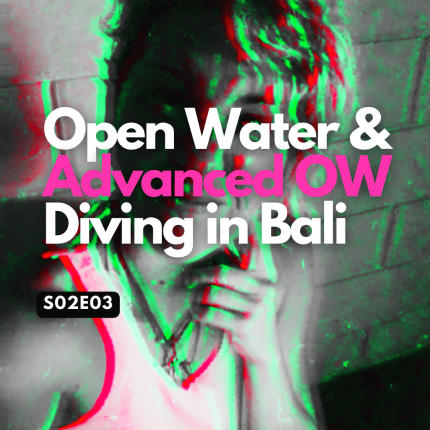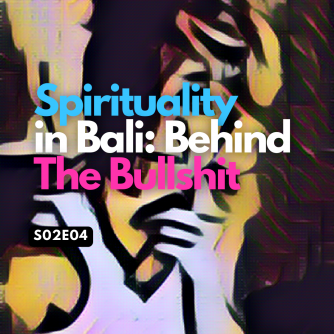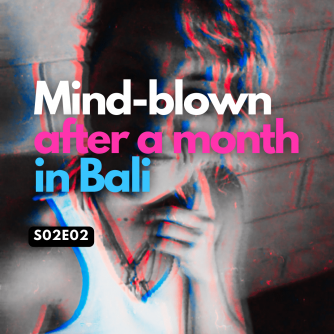Hi guys, welcome back to Perla Meets The World. I just finished my Advanced Open Water course and before I forget all the theory and juicy stuff, I decided to dedicate one episode to talk about my experience as a recently certified diver, covering the following:
- The difference between the Open Water Course & the Advanced Open Water
- Where I did the courses (Mambo Dive Resort – Nusa Penida)
- Why I highly recommend diving in Nusa Penida, Bali (Indonesia)
- Fish and marine life that I got to see, including mantas
- My struggles with the Open Water Course, and later on during the Advanced Open Water Course
- Skill tests I went through on both Open Water and Advanced Open Water to be certified
- Different types of adventure dives you can choose from when rolling on an Advanced Open Water Course in Nusa Penida
- Funny stuff that happened to me when diving and frequently asked questions such as what to do if you want to poo underwater.
These and more questions and fun facts are waiting for you. If you are interested in starting a diving journey, this podcast is definitely for you.
What can an Open Water Diver do?
In this episode, I share my experience learning how to dive in Nusa Penida. I signed up for the Open Water Diving course first, and three weeks later off I was, back to the island for a little bit more. After the first taste, it’s difficult not to want more: more skills, more depth, more experience, more.
Here is the video I put together for my Open Water Course:
Do you want to know what can an Open Water Certified Diver do? Keep listening because I tell you off the top of my head all the skill tests, tricks, and knowledge my Dive Instructor (Uys Meintjes) taught me during this three-day course.
First off, you start with the theory. It’s very dense, so I recommend going through it at least one week before the first day in the swimming pool. There are a lot of things to learn, everything is new, and so you will require more time to assimilate it all. Plus the exams you have to pass before starting the in-site diving practices. It took me roughly 8 hours to go through all the theory, give or take.
And don’t get scared if all that you’re learning seems scary. PADI‘s objective is to prepare you for all the worst-case scenarios. That doesn’t mean that these will happen necessarily.
What’s the difference between Open Water And Advanced Open Water Courses?
Well, first of all, you can dive deeper, which is more fun, because the coolest dive sites with wrecks like the S.S. Yongala in Queensland, Australia, are a bit deeper than 18 meters (the maximum depth you are allowed to dive as an Open Water Certified Diver.
The Advanced Open Water course in Nusa Penida (and everywhere, really) includes two mandatory diving blocks that every student will have to pass: the underwater navigation (which is so much fun), and the Deep Dive (basically your first deep dive at around 30 meters, and all you need to know when diving so deep):
- Navigation Dive in Manta Point, Nusa Penida: the most exciting and fun dive I have ever had by far. We couldn’t see shit underwater. And there were not many natural reference points to orientate ourselves. The perfect conditions to use the compass accurately, and to find our way back to the drop point. We managed to do that, and although we missed some mantas, I enjoyed the navigation games our Instructor prepared for us.
- Deep Dive in Crystal Bay, Nusa Penida: As mentioned above (and in the podcast), the Deep Dive is mandatory for all Advanced Open Water courses, and it pretty much entails learning how to dive in deeper environments, understanding how pressure change and shape objects, our own dive suits, and what to do when something goes wrong so deep down. As well as avoiding Narcosis, or identifying if someone is actually under the effects of Narcosis. The most important thing you will learn, apart from always keeping breathing, is to dive in a safe way so that you avoid the Decompression Sickness (DCS) also known as The Bends.
Decompression sickness (DCS), known as ‘the bends’ because of the associated joint pain, is a potentially deadly condition caused by bubbles of nitrogen gas forming in the blood and tissues. It’s most common among divers using scuba tanks, but can affect free-divers and people at high altitude.
Australian Geographic
The course also gives you the opportunity to expand your diving skills (not only in Nusa Penida, Bali, but everywhere) with three additional adventure dives of your choosing. There are multiple ones, like the Night Dive, or the Wreck Dive. I chose the following ones:
- Peak Performance Buoyancy in Nusa Penida: it’s seen as one of the most boring Adventure dives, as you pretty much learn to master your buoyancy skills. But I enjoyed it a lot, because it entails fun games, such as touching weights placed at the bottom of the ocean floor only with your regulator, and without touching the ocean floor with your body. Or keeping your balance and buoyancy upside down!!!!
- Drift Dive in Nusa Penida: This island in Bali was actually the best place to do the Drift Adventure Dive, as there is some current in certain dive sites such as Blue Garden, and PED. Although it depends on the day, weather conditions, tides, etc. But it was great learning how to hide behind a rock or a prominent reef when the current is too strong and you want to avoid it for a while or wait for your buddy.
- Fish Identification Dive in Nusa Penida: Okay. This might not sound exciting at all. But if you knew how many groups of fish there are on Nusa Penida Island, you’d flip out! Mind-blowing. From Bannerfish to Scorpionfish, Pufferfish, the lovely and cute nudibranchs, Nemos everywhere in the anemones (clownfish), manta rays, reef sharks, pipe horses, Octopuses, Hawksbill Turtles… It’s exciting to go down with your board ready to write down all the fish groups you can identify.
I almost crashed against a reef, but if you want to know more, hit play and listen to the podcast!
Why learn how to dive in Nusa Penida?
Nusa Penida, or Penida Island, has all the conditions for a diver to learn and master the skills needed not to die, pretty much. The island has different dive sites, plus you will get the chance to see a Mola Mola (Sunfish, or Mambo fish) if you are lucky! These are usually in deep waters, but sometimes they come to the surface, so who knows? Below there is a video taken by my Dive Instructor of the Mola Mola fish. Mind-blowing!!
Diving Technical Details
- Where: Nusa Penida
- With who: Mambo Dive Resort
- Courses: Open Water + Advanced Open Water
- Accommodation: Nibugi Guest House
Reach out if you have questions or comments, or if you simply want to share your experience with me at perlameetstheworld@gmail.com. Otherwise, you can find me on Instagram @perlameetstheworld for more content, new podcast episodes, and epic adventures!




